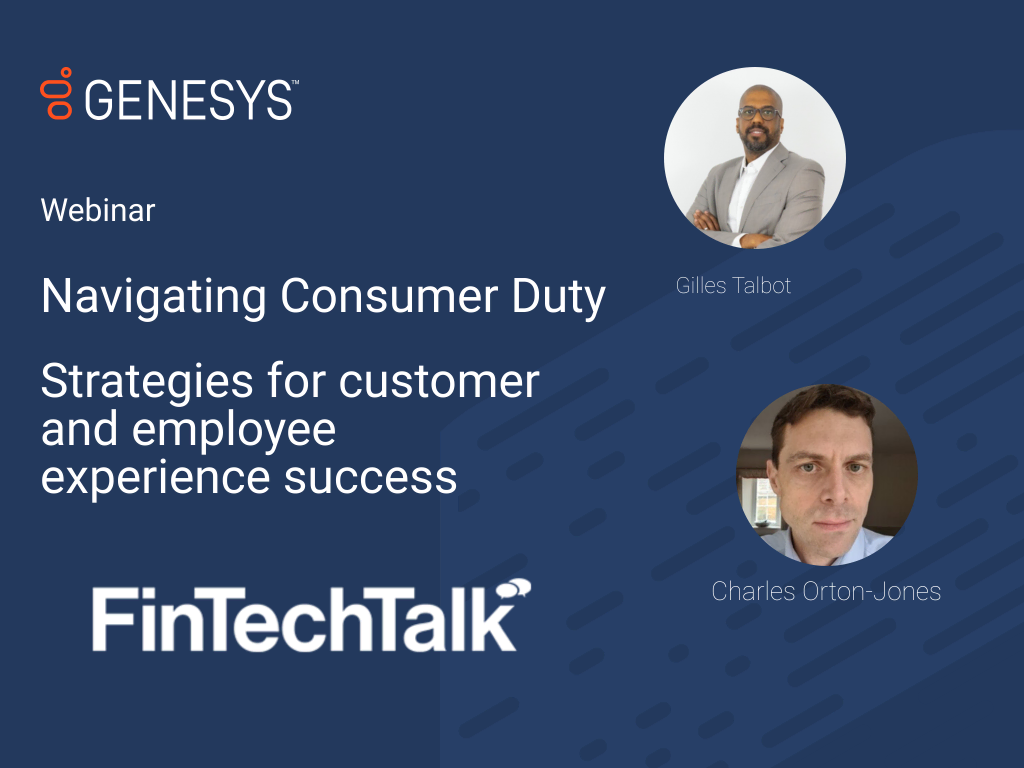Your Genesys Blog Subscription has been confirmed!
Please add genesys@email.genesys.com to your safe sender list to ensure you receive the weekly blog notifications.
Subscribe to our free newsletter and get blog updates in your inbox
Don't Show This Again.

Welcome to the era of Consumer Duty – a pivotal moment for all of us in the insurance industry. This isn’t just another regulatory hoop to jump through; it’s a fundamental shift in how we do business. At its core, Consumer Duty is about putting our customers first, ensuring they’re protected, and fostering an environment of trust and fairness.
So, what’s on the agenda? It’s a robust framework comprising the Consumer Principle, that defines the overall standard of expected behaviour, and the cross-cutting rules that explain how insurers should act to deliver on the four key areas: governance of products and services, fair pricing and value, making products more understandable, and offering appropriate support to customers as and when they need it. This will mean that we will need more customer segmenting and behavioural data, so that we can better understand our customers, who they are, what they need and how they behave, so we can serve them better.
Think of this as an opportunity to stand out in the market. We’re not just talking compliance here; we’re talking about building stronger, more meaningful relationships with our customers. It’s about being transparent in our dealings, innovative in our offerings, and empathetic in our interactions.
So, let’s embrace this change. Let’s use the Consumer Duty as our north star to guide us toward not just meeting, but exceeding, our customers’ expectations. After all, in this new landscape, those who truly understand and care for their customers are the ones who will thrive.
So let’s take a look at a four step plan to help you deliver exceptional customer experiences to every customer!

Discover key strategies to transition from reactive identification to proactive support of your vulnerable customers.
If you would like to learn more watch this on-demand FinTechTalk webinar as we delve into these critical topics and equip you with actionable insights to navigate Consumer Duty successfully.
This 4-step plan offers a strategic approach for insurers to not only comply with the Consumer Duty but to excel in delivering exceptional customer experiences. By enhancing consumer engagement, innovating products and services, supporting employees, and continuously improving practices, insurers can establish themselves as leaders in customer-centricity. Adhering to the Duty’s principles not only ensures regulatory compliance but can also drive long-term customer loyalty and trust.
Watch the associated on-demand webinar Navigating Consumer Duty – strategies for customer and employee experience success.
Subscribe to our free newsletter and get the Genesys blog updates in your inbox.